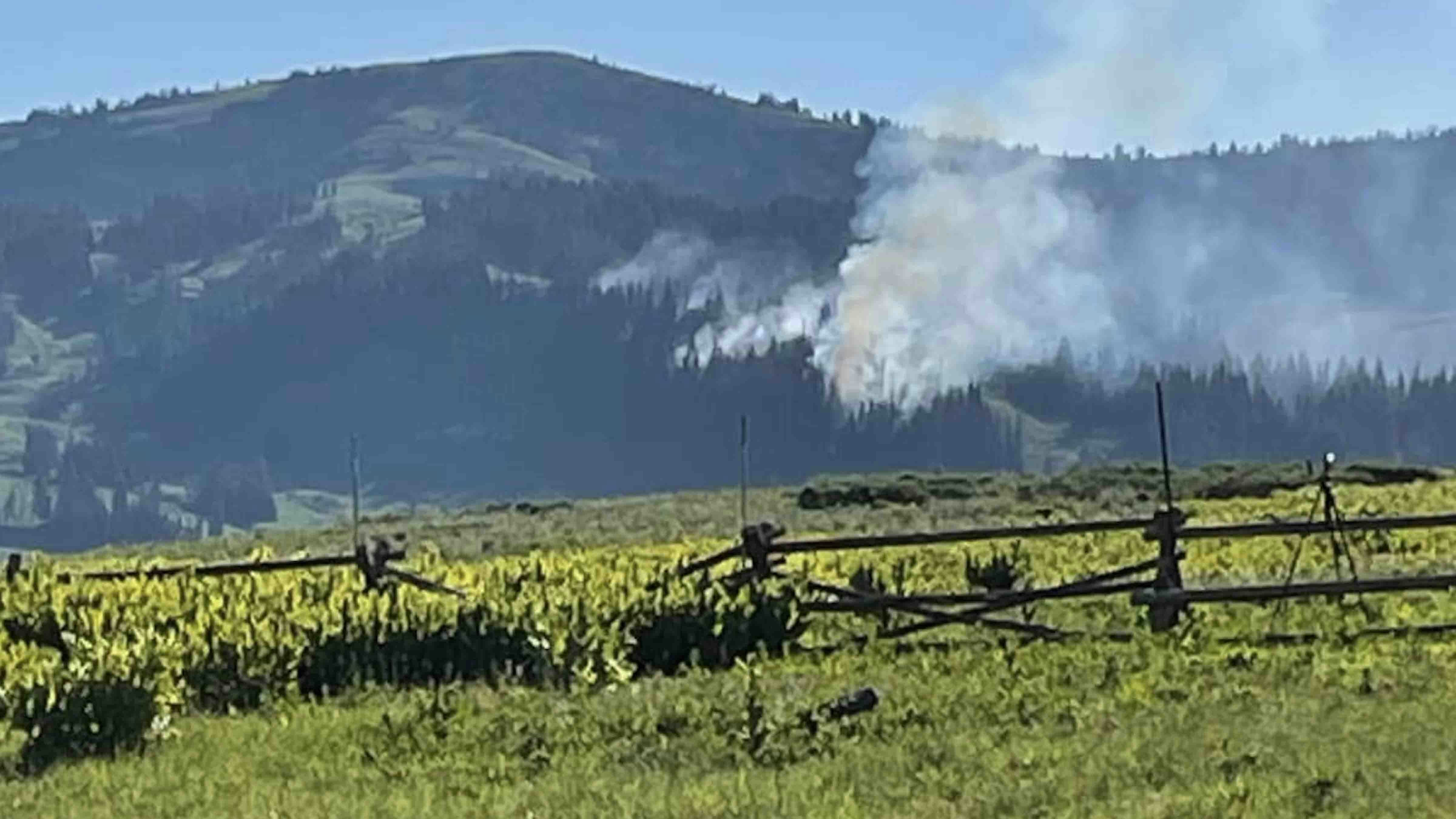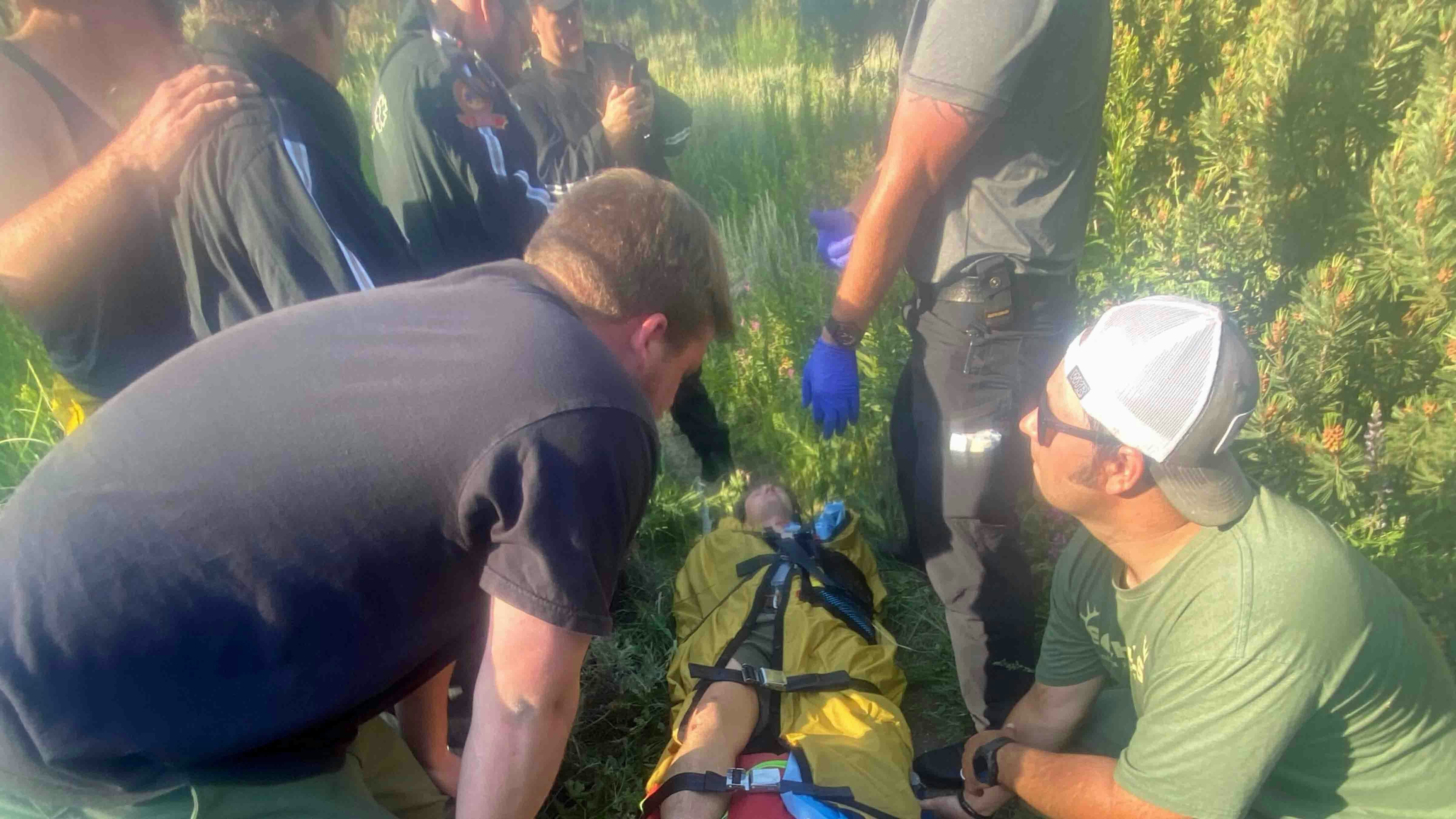In separate incidents less than a week apart, two children — an 8-year-old girl and a boy, 4 — were hurt by irate cow elk protecting their calves in Estes Park, Colorado.
The girl was charged and stomped by a cow elk May 30, and the boy was similarly attacked Monday, according to reports from the Colorado Parks and Wildlife department (CPW).
In both instances, the children were taken to hospitals, treated and released the same day.
The town is overtaken every spring and fall by a massive elk herd with Wyoming roots, as the elk migrate in and out of Rocky Mountain National Park.
The spring migration can be especially dicey, because mama elk are on high alert for any perceived threats to their newborn calves, Estes Park local Seth Calbert told Cowboy State Daily on Wednesday.
“Usually every spring, we have at least a couple of incidents involving cows and their calves,” said Calbert, a store manager at Estes Park Mountain Shop.
Children Charged, Stomped By Elk
The girl was on an afternoon bicycle ride in the Estes Park neighborhood where her family lives when a cow elk started charging her from about 60 yards away, according to CPW.
“The elk caught up to the victim and stomped on her multiple times,” according to a CPW statement.
A CPW officer responded to the attack site and found a cow and calf elk. When the cow became aggressive again, the officer hazed it away by shooting it with a nonlethal beanbag round from a shotgun.
In the second incident at a playground in a city park at about 1:30 p.m. Monday, the boy’s family was apparently unaware that there were elk calves near where he was playing.
“Two elk calves were hidden nearby in a rock area, unbeknownst to families using the playground,” CPW reports. “As the boy was playing, a cow elk suddenly charged and stomped on him multiple times. A family member told CPW they scared the cow elk off the boy and took him to a hospital, where he was treated and released Monday evening.”
‘We’ve Been Getting Them From All Over The State’
With Colorado’s high human population, and elk, deer and moose having their young, spring and early summer are typically busy for CPW, agency spokeswoman Bridget O'Rourke told Cowboy State Daily on Wednesday.
“We’ve been getting them (reports) from all over the state. This is the time of year when we do our annual ‘leave wildlife alone and just be cautious around them’ reminders,” she said. “This is, unfortunately, a regular occurrence when elk are protecting their young.”
Cow moose with babies are nothing to trifle with either, O’Rourke added.
“We’ve already had some incidents this year with cow moose becoming aggressive with people walking their dogs on trails. We ask that people please keep their dogs on leashes,” she said.
There haven’t been any serious injuries related to wildlife attacks reported yet in Colorado. But last month in Alaska, a man was killed by a cow moose after he apparently got too close while trying to photograph her two newborn calves.
Also in May, a female grizzly protecting her cub mauled and seriously injured a man in Wyoming’s Grand Teton National Park. The mauling stopped with the bear chomped into the man’s can of bear spray, causing it to burst in her face.
For now at least, CPW plans to keep patrolling Estes Park and educating the public to steer clear of elk, O’Rourke said. There are no plans to try hazing the elk out of the town completely, or similar large-scale measures.
“Nothing of that magnitude is being discussed at this time,” she said.
Colorado Elk Have Wyoming DNA
The Estes Park elk herd has roots in the Cowboy State.
Colorado boasts the world’s largest elk population at 280,000 strong, and has Wyoming to thank for it.
There was a time when the Centennial State was all but out of Wapiti. By the early 20th century, the state’s elk population was disappearing. But then Wyoming stepped in to help.
“In 1916, Colorado imported 50 elk from Wyoming to re-establish dwindling herds,” according to CPW.
“The elk were transported and released in Idaho Springs and the Greenhorn Mountains in Pueblo County,” the agency reports. “From these limited transplants, and through decades of trapping and relocation efforts by wildlife managers, elk populations have soared to the abundant herds for which Colorado is now famous.”
Mark Heinz can be reached at mark@cowboystatedaily.com.





